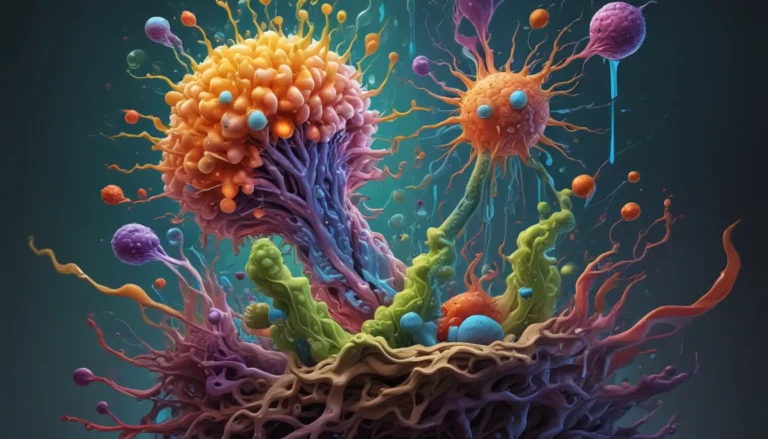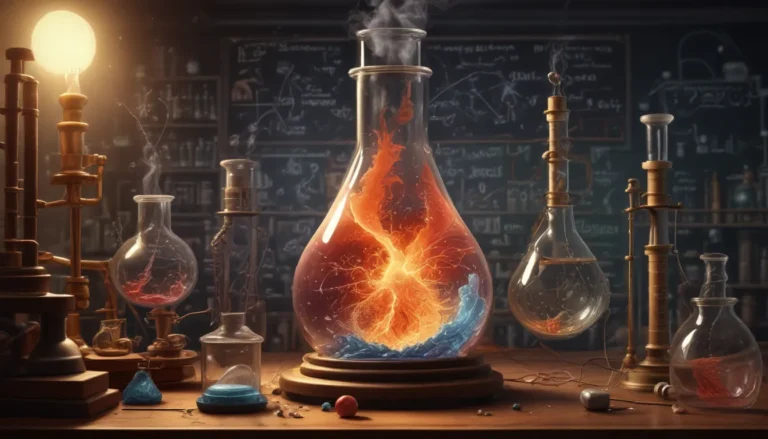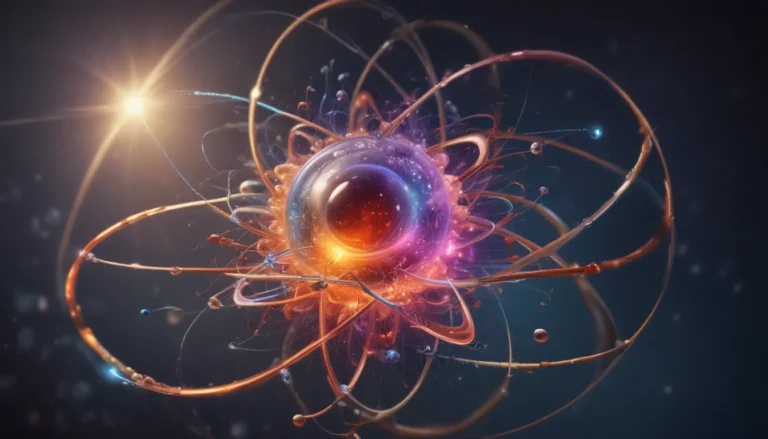A Note About Images: The images used in our articles are for illustration purposes only and may not exactly match the content. They are meant to engage readers, but the text should be relied upon for accurate information.
Solid solutions are like hidden treasures in the world of chemistry, where different substances come together to create remarkable mixtures with unique properties. From enhancing material strength to transforming the color of gemstones, solid solutions have revolutionized various industries, offering endless possibilities for innovation. Let’s embark on a journey to uncover 10 extraordinary facts about solid solutions that highlight their significance and versatility.
The Marvel of Solid Solution: A Homogeneous Blend
Solid solution is a captivating phenomenon where two or more substances merge at the molecular level to form a uniform mixture. This means that the components of a solid solution are evenly distributed and cannot be easily separated, showcasing a seamless integration of different elements.
Diverse Applications of Solid Solutions
The applications of solid solutions span across a wide range of industries, including metallurgy, materials science, and pharmaceuticals. These magical mixtures are utilized to enhance material properties such as strength, conductivity, and corrosion resistance, paving the way for groundbreaking innovations in various fields.
Alloy Formation: Enhancing Material Properties
One of the most common examples of solid solutions is the formation of alloys. By combining different metals, alloys are created to form a solid solution with improved properties, ranging from increased hardness to enhanced resistance to heat, showcasing the transformative power of solid solutions in material science.
Substitutional and Interstitial Solid Solutions
In the realm of solid solutions, two main types stand out – substitutional and interstitial. Substitutional solid solutions occur when atoms of one element replace those of another within the crystal lattice structure, while interstitial solid solutions involve smaller atoms fitting into the spaces between larger atoms, commonly found in metallic elements.
Enhancing Gemstone Colors with Solid Solutions
Solid solutions have the remarkable ability to influence the color of gemstones by introducing impurities into the crystal lattice, creating captivating color variations that make each gemstone unique and mesmerizing. This process highlights the artistic and transformative nature of solid solutions in the world of gemology.
Transforming Properties in Ceramics
Solid solutions play a pivotal role in ceramics by enabling the manipulation of properties such as electrical conductivity, thermal expansion, and chemical stability. This versatility allows for the creation of ceramic materials with tailored characteristics to suit specific applications across various industries.
Catalyzing Innovation in Pharmaceuticals
In the pharmaceutical industry, solid solutions are harnessed to enhance the solubility and stability of drugs, ultimately improving their effectiveness and bioavailability. This application showcases how solid solutions contribute to advancements in healthcare and the development of more potent medications.
Strength Through Solid Solution Strengthening
Solid solution strengthening is a phenomenon where the addition of a second phase to a base material results in increased strength. By distorting the crystal structure, the atoms of the second phase inhibit the movement of dislocations within the material, enhancing its overall strength and durability.
Temperature Dynamics and Solid Solutions
The formation of solid solutions is often temperature-dependent, with higher temperatures facilitating easier formation. However, as temperatures decrease, the solubility of components may change, leading to the formation of different phases within the solid solution, highlighting the intricate nature of solid solution chemistry.
In conclusion, the world of solid solutions is a realm of endless possibilities and captivating discoveries. From creating innovative alloys to enhancing the properties of gemstones and pharmaceuticals, solid solutions continue to shape various industries and drive progress in science and technology. Their transformative potential and versatility make them a cornerstone of modern innovation and exploration.
Embracing the Wonder of Solid Solutions
Solid solutions stand as a testament to the marvels of chemistry and the boundless creativity of nature. By delving into the intricate world of solid solutions, we not only unravel the mysteries of molecular interactions but also open doors to new opportunities for advancement and discovery. Let the enchanting world of solid solutions inspire you to explore, innovate, and unlock the countless possibilities that lie within their magical mixtures.
FAQs: Unveiling More About Solid Solutions
-
What is solid solution?
Solid solution refers to a homogeneous mixture formed when two or more substances combine at the atomic or molecular level, showcasing a seamless integration of different elements. -
How is solid solution different from other solutions?
Solid solution differs from other types of solutions as it involves the combination of solid substances, unlike liquid or gaseous solutions. -
What are some examples of solid solutions?
Examples of solid solutions include the blending of silver and copper to create sterling silver, as well as the formation of gemstones like sapphires and rubies through the mixing of different metal ions. -
What are the applications of solid solutions?
Solid solutions find applications in metallurgy, materials science, pharmaceuticals, and electronics, allowing for the creation of materials with enhanced properties and tailored characteristics. -
Can solid solutions undergo phase changes?
Yes, solid solutions can undergo phase changes, including solid-state reactions triggered by external factors like temperature or pressure, altering the atomic arrangement and properties of the mixture. -
How are solid solutions studied in laboratories?
Solid solutions are studied using techniques such as X-ray diffraction, spectroscopy, and electron microscopy to analyze their crystal structure, composition, and properties with precision and accuracy. -
Can solid solutions improve material performance?
Solid solutions have the potential to enhance material performance by improving properties such as strength, hardness, conductivity, and corrosion resistance, contributing to the development of advanced materials. -
What challenges are associated with solid solutions?
Challenges related to solid solutions include maintaining desired composition throughout the material, avoiding phase separation, and preventing the formation of unwanted compounds, highlighting the complexities of working with these fascinating mixtures.
Solid solutions illuminate the fascinating intersections of science, nature, and innovation, offering a gateway to explore the boundless possibilities of molecular interactions and material transformations. As we continue to uncover the secrets of solid solutions and their remarkable properties, we embark on a journey of discovery, creativity, and inspiration, guided by the enchanting allure of these magical mixtures.






